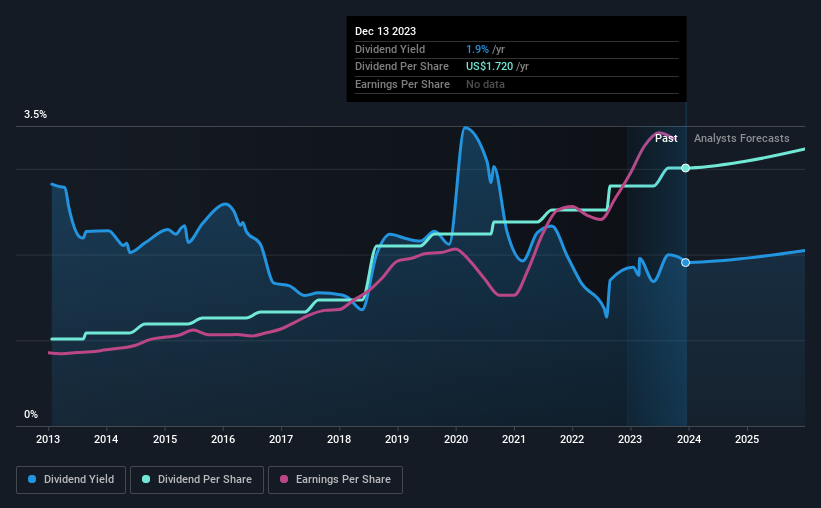BancFirst (NASDAQ:BANF) Is Due To Pay A Dividend Of $0.43
The board of BancFirst Corporation (NASDAQ:BANF) has announced that it will pay a dividend on the 16th of January, with investors receiving $0.43 per share. Even though the dividend went up, the yield is still quite low at only 1.9%.
Check out our latest analysis for BancFirst
BancFirst's Payment Expected To Have Solid Earnings Coverage
It would be nice for the yield to be higher, but we should also check if higher levels of dividend payment would be sustainable.
BancFirst has a long history of paying out dividends, with its current track record at a minimum of 10 years. While past data isn't a guarantee for the future, BancFirst's latest earnings report puts its payout ratio at 24%, showing that the company can pay out its dividends comfortably.
EPS is set to fall by 28.5% over the next 3 years. Despite that, analysts estimate the future payout ratio could be 34% over the same time period, which is in a pretty comfortable range.
BancFirst Has A Solid Track Record
The company has a sustained record of paying dividends with very little fluctuation. Since 2013, the dividend has gone from $0.58 total annually to $1.72. This works out to be a compound annual growth rate (CAGR) of approximately 11% a year over that time. Rapidly growing dividends for a long time is a very valuable feature for an income stock.
The Dividend Looks Likely To Grow
Investors who have held shares in the company for the past few years will be happy with the dividend income they have received. BancFirst has seen EPS rising for the last five years, at 14% per annum. Growth in EPS bodes well for the dividend, as does the low payout ratio that the company is currently reporting.
We Really Like BancFirst's Dividend
Overall, we think this could be an attractive income stock, and it is only getting better by paying a higher dividend this year. The earnings easily cover the company's distributions, and the company is generating plenty of cash. However, it is worth noting that the earnings are expected to fall over the next year, which may not change the long term outlook, but could affect the dividend payment in the next 12 months. All in all, this checks a lot of the boxes we look for when choosing an income stock.
Market movements attest to how highly valued a consistent dividend policy is compared to one which is more unpredictable. At the same time, there are other factors our readers should be conscious of before pouring capital into a stock. For example, we've picked out 1 warning sign for BancFirst that investors should know about before committing capital to this stock. Looking for more high-yielding dividend ideas? Try our collection of strong dividend payers.
Have feedback on this article? Concerned about the content? Get in touch with us directly. Alternatively, email editorial-team (at) simplywallst.com.
This article by Simply Wall St is general in nature. We provide commentary based on historical data and analyst forecasts only using an unbiased methodology and our articles are not intended to be financial advice. It does not constitute a recommendation to buy or sell any stock, and does not take account of your objectives, or your financial situation. We aim to bring you long-term focused analysis driven by fundamental data. Note that our analysis may not factor in the latest price-sensitive company announcements or qualitative material. Simply Wall St has no position in any stocks mentioned.

